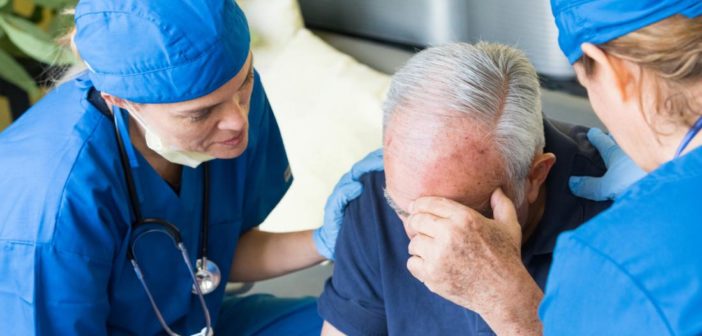My mother has endured several strokes, and each occurrence was a nerve-wracking experience for my family. We were taught to act FAST because every second counted to save Mom.
Strokes happen when there’s an interruption in the blood supply to the brain, or if there’s bleeding in the brain. Strokes can debilitate a person because they destroy brain cells which control many bodily functions.
Monday (Oct 29) marks World Stroke Day, an international campaign that emphasizes the need for everyone to understand the serious nature of this disease, considered to be the leading cause of disability and the second leading cause of death worldwide. This year’s campaign centers around the survivors, and helping them get #UpAgainAfterStroke, as most of them now live with some form of permanent disability. According to the organizers of this campaign, the World Stroke Organization:
Sometimes the hardest part of having a stroke is the feeling that you are alone.
80 million people in the world have had a stroke, 50 million stroke survivors live with some form of permanent disability. If you have had a stroke, or care for someone who has, one thing is for sure – you are not alone! We are here to help you get #UpAgainAfterStroke.
Now let’s go back to that phrase, “act FAST,” which contains life-saving knowledge about the most common warning signs in a person who’s experiencing a stroke.
Face: Notice a droop or sag on someone’s face? Or their smile is uneven?
Arms: Are their arms feel numb or weak? Are their arms unsteady or drop down when raised?
Speech difficulty: Can that person repeat a simple phrase without mumbling?
Time: If someone’s showing those warning signs, it’s time to act fast and call emergency services.
Aside from FAST, there are other signs that people should know about:
- Numbness or weakness on one side of the body.
- A sudden loss of vision or trouble seeing in one or both eyes.
- Sudden loss of balance and coordination in the body.
- Sudden dizziness or a sudden and severe headache.
- Confusion and/or trouble understanding.
Once you called an emergency service, remember to take note of the time when the stroke happened as this can provide rescuers information as to which treatment should be used.
Being aware of these warning signs is important to save someone else’s life, as strokes can damage the brain or cause life-long disabilities, or at worst lead to death. If you or a family member or close friend experience any of these signs frequently, it is better to see your doctor.
Types of Stroke
- A blood clot that blocks brain arteries causes an ischemic stroke. Almost 9 out of 10 strokes are an ischemic stroke, which reduces the blood and oxygen flow to the brain and it leads to brain damage.
- When a blood vessel in the brain bursts or bleeds, a hemorrhagic stroke happens where blood accumulates in the rupture and puts pressure on the brain.
- A transient ischemic attack (TIA), or ministroke, is a quick event caused by a temporary block of blood flow to the brain. It may be a sign of an impending, more severe stroke.
If you know you’re at high risk for stroke…
- Tell your family and friends about FAST: Face, Arms, Speech, Time to Act.
- Have a ready copy of your medical information, which can be stored on a flash drive or saved in your mobile phone. This medical information should always have your updated medical history, a copy of your medications and their dosage, and emergency contacts.
- If you have younger children, teach them how to call for help. Place emergency hotlines in a common area in the house (fridge, the back side of the main door), or set up a smart assistant in your mobile devices that automatically calls emergency services when a specific keyword is pronounced.
- Inform the first aid responders in your home of the nearest hospital or clinic, the directions and hotlines, and any other backups such as a neighbor or a security office (police or fireman).
Being always ready and aware of the signs of a stroke is important to save your own or someone else’s life. Remember, if you have experienced a stroke, the risk of having another becomes higher. So how then can you prevent it? Minimize the risk factors by maintaining a healthy diet, increasing activity and exercise, and quitting tobacco use.
Photo: Medical News Today




